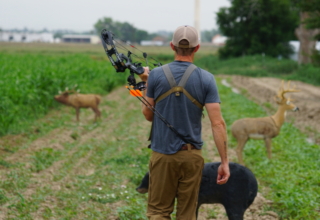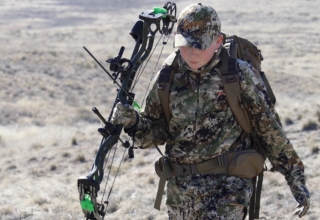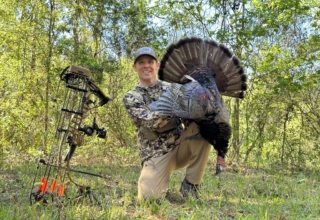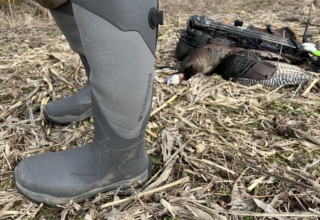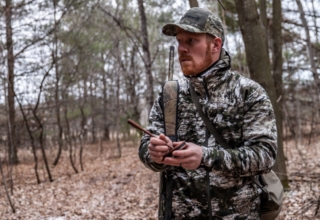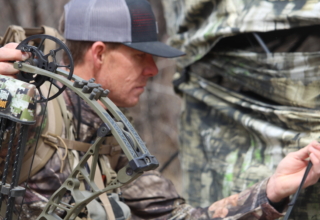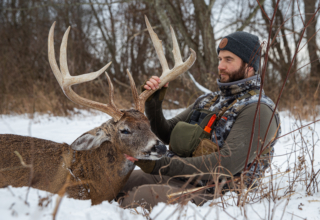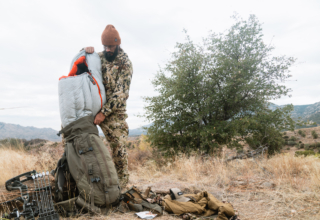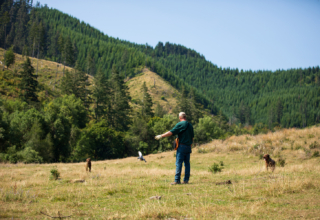From the backyard to the -40°F North Dakota tundra, Mathews’ new flagship bow flat-out performs, and is possibly the best compound bow Mathews has ever crafted.
by Darron McDougal
Since bow manufacturers began releasing new bows during the fall rather than at the ATA Show as was customary during my early archery-industry years, I haven’t been one to set up and hunt with new bows mid-season. Instead, I complete the season with the current-year model. Then, I set up a new model during the offseason, shoot it a bunch, and break it in during spring turkey season. However, Mathews’ new Phase4 became an exception to that philosophy.
A connection instantly formed. It feels just like the V3X I’d been shooting, and it has all the same specs. However, it has two new features that make shooting even more excellent.
I set it up and started shooting it between hunts. Arrows flew beautifully, and my consistency was outstanding. So, as I made plans to head for North Dakota to settle the score on flatland whitetails. I had been to North Dakota during November but didn’t tag out. For this late-season trip, I left my V3X on the hook and zipped the Phase4 into my bow case.
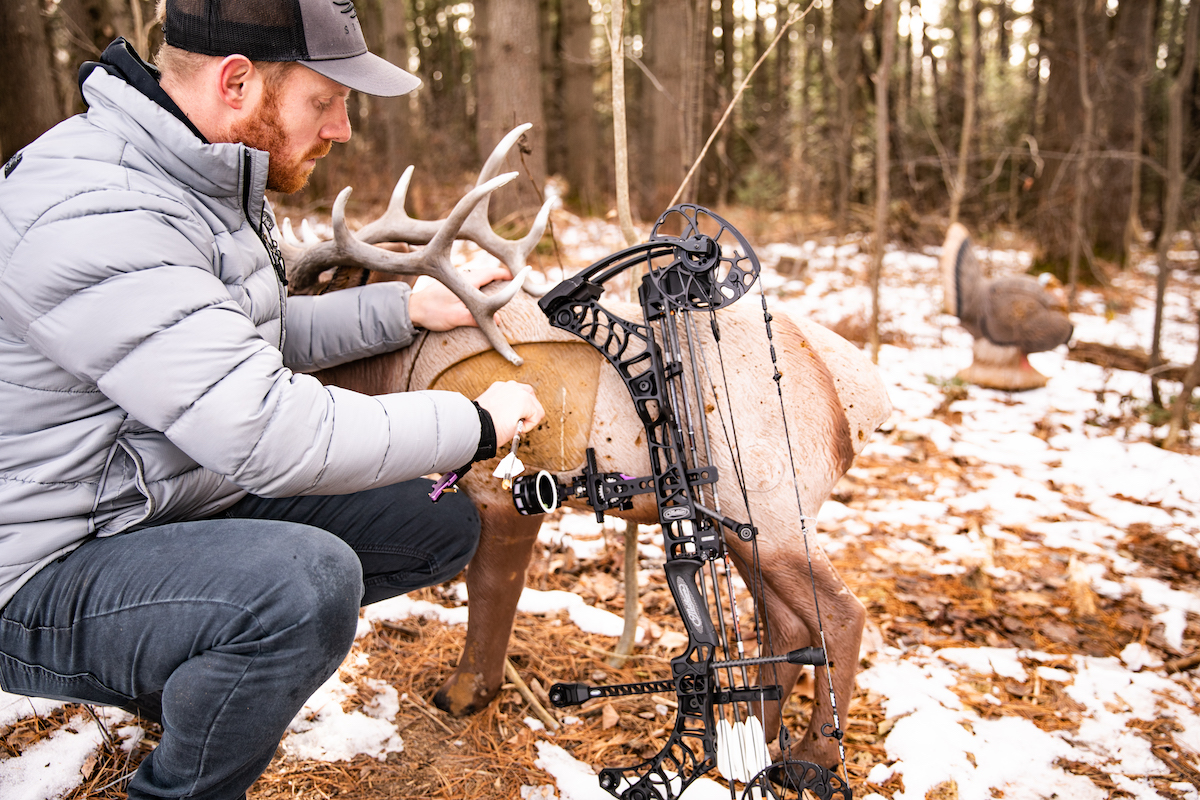
I’ll finish the review by detailing the outcome of my North Dakota bowhunt. First, let us dive into technology and why the Phase4 is Mathews’ best hunting bow.
Starting Line
It has been highly captivating to watch the technological progression from the 2020 VXR to the 2023 Phase4. I was 100 percent satisfied with the VXR 28 — loved that bow — but models released after that have continually improved on an already good thing. Every intricate technological detail rolled out plays a definitive purpose in “elevating the archery experience,” which is Mathews’ motto.
Now, at first glance, the Phase4 looks just like the V3X. While it is highly similar, the differences are in the details. The Phase4 has two new advancements. Let’s go there now.
Accessorized Balance Redefined
You might recall that the 2019 Mathews Vertix debuted the Integrate Mounting System, designed by rest kingpin QAD. If you’re unfamiliar with Integrate, the Mathews UltraRest Integrate MX and other Integrate-compatible rests mount directly to the back of the riser at the lateral center. The mounting system is more rigid and dependable, and more importantly, it centers the arrow rest’s weight with the riser.
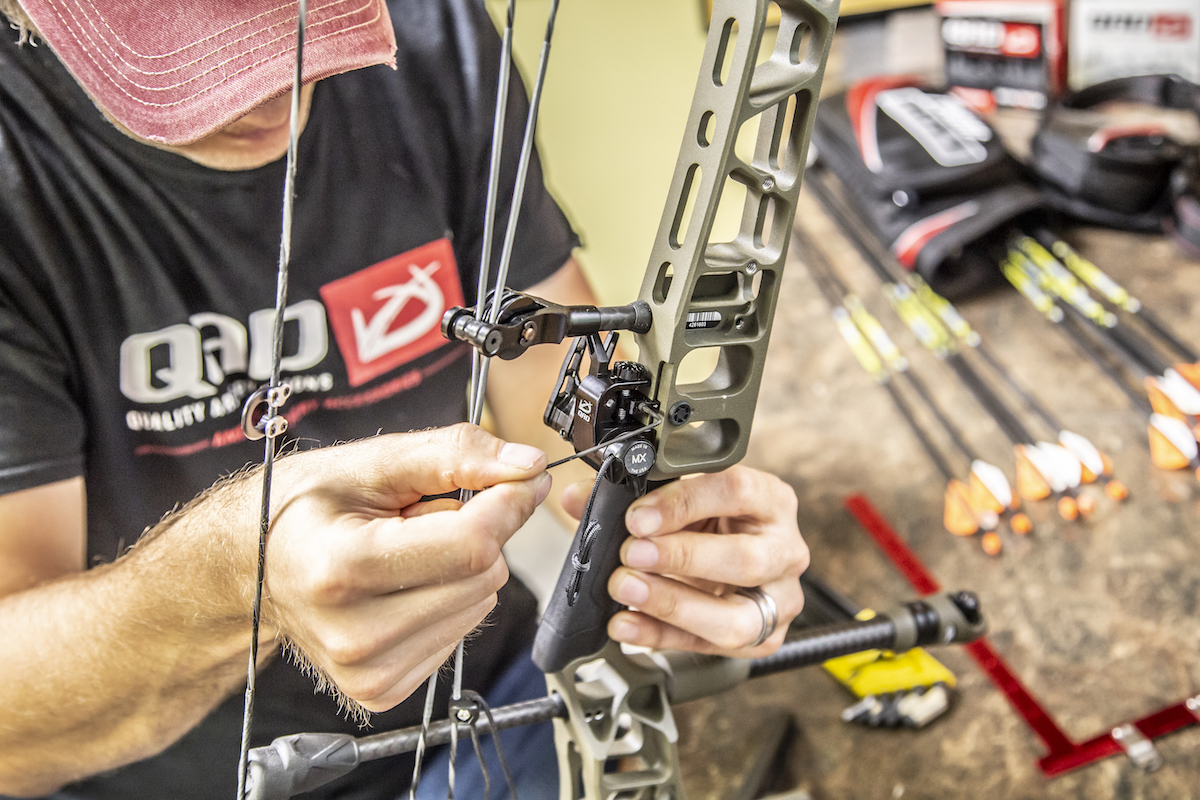
Mathews then launched the Bridge-Lock sight mount — a dovetail sight slides directly into the riser. This kills two birds with one stone. First, it eliminates the sight bracket (reducing weight). Second, it positions the sight weight at the center of the riser. Utilizing the Integrate feature and the Bridge-Lock sight mount, the Mathews LowPro Quiver becomes compatible. The quiver is set closer to the riser than ever, and the accessorized balance is the best that money can buy. But it doesn’t end there.
The Phase4 features a new stabilizer mount specifically for Mathews’ new Bridge-Lock Stabilizer. This system breaks new ground. The Bridge-Lock Stabilizer pairs directly with the riser in a dovetail fashion, just like the Bridge-Lock Sight Mount. This creates a more solid connection between the bow and stabilizer, which reduces vibrations. Further, Bridge-Lock Stabilizers are designed to adjust in 1/2-inch increments to achieve a custom, individualized feel and balance. It’s like having multiple stabilizers for the price of one.
Mathews offers Bridge-Lock Stabilizers in 8, 10, and 12 inches. The end of the bar is weighted and designed to halt vibrations with the Harmonic Stabilizer Nano EHS. Additional 1-ounce stackable weights ($19.99 MSRP each) provide the shooter with greater customization.
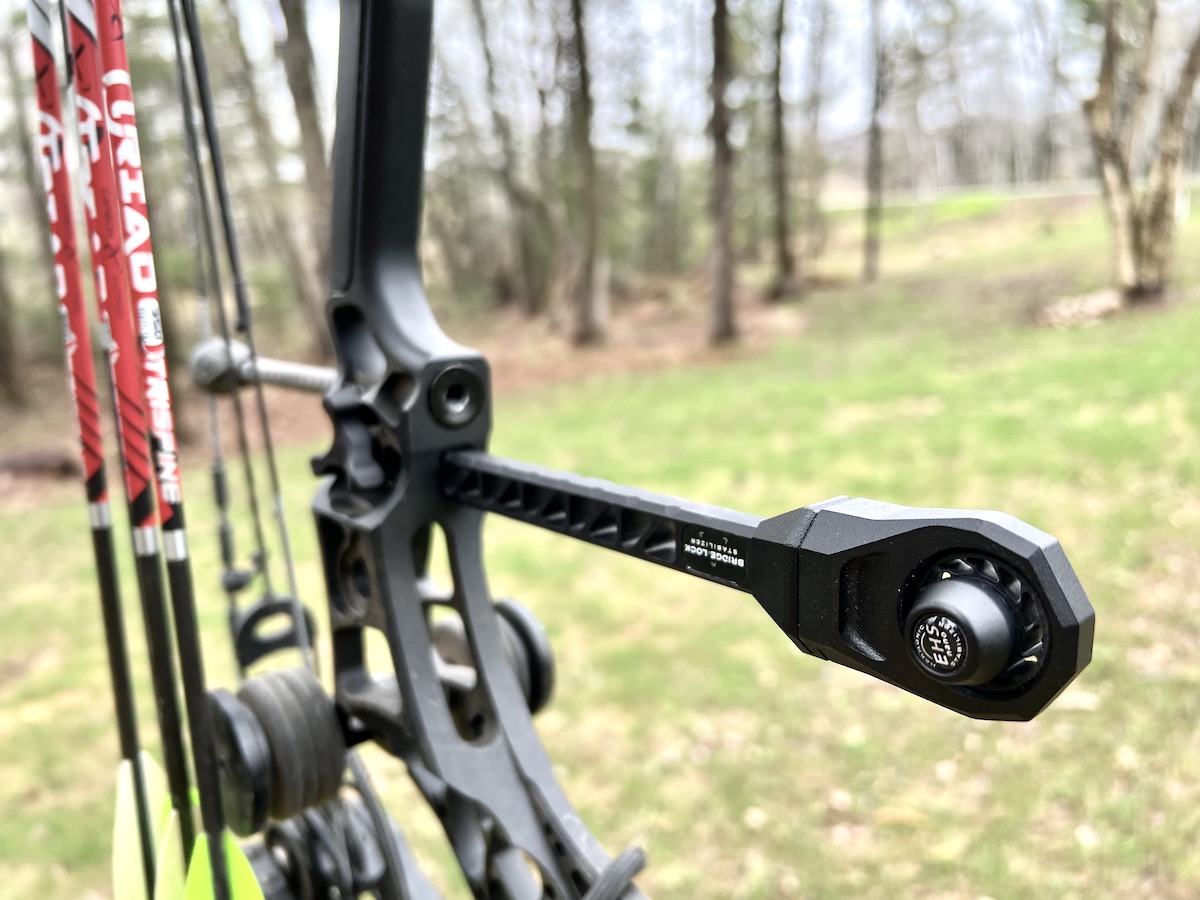
The culmination of these accessory-mounting advancements is a perfectly balanced bow when accessorized and a more streamlined and aesthetically pleasing setup. Rather than tacking on conventional accessories, everything locks directly to the bow so that the accessories aren’t just afterthoughts but parts of the bow. The dependability is unrivaled.
Even Quieter Than the V3X
Split-limb bows traditionally have four separate limbs. At first glance, the Phase4’s limbs look similar to other split limbs but have rubber veins on each limb’s top and bottom. Don’t take this at face value; those rubber veins aren’t stick-on dampeners. The Phase4 has eight separate limbs, and the dampening rubber is sandwiched between every limb pair. It’s called Resistance Phase Damping.
More parts mean more problems, right? Not here. Mathews extensively tested this new system in extreme hot and cold temperatures with no negative impact on accuracy or consistency. I, too, tried it in extreme cold. More on that to come.
Why is Resistance Phase Damping superior to add-on limb dampeners? Well, the limbs store energy at full draw, and the shot generates vibrations as the limbs transfer power to the arrow — that’s common knowledge. From there, the vibrations move to the shooter’s hand through the riser. Because the silencing material runs between the limbs for the entire limb length, the dampening material has a more significant impact than a simple stick-on rubber dampener, which is confined to a specific spot on the limb.
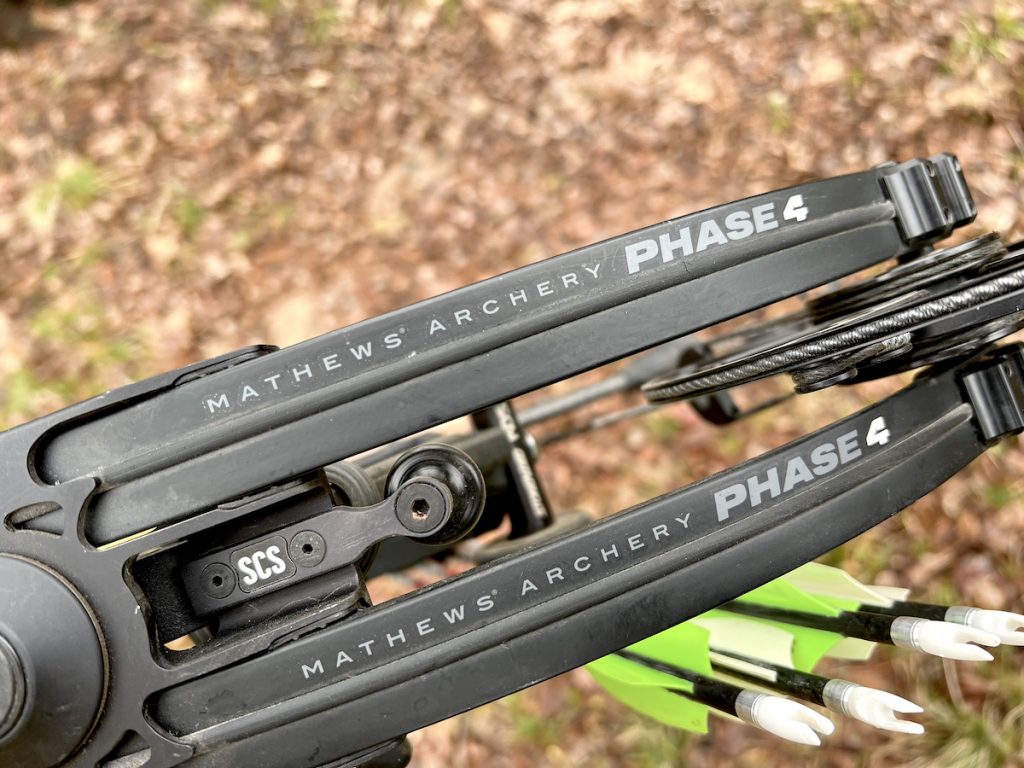
Vibrations are addressed at their source, resulting in the smoothest and quietest shooting experience that Mathews has ever delivered. The combination of Resistance Phase Damping and the Bridge-Lock Stabilizer cleans up noises and vibrations more than I initially realized. Mathews has tested the Phase4 to be up to 13 percent quieter and with up to 37 percent fewer vibrations than past models.
Despite its smoothness and silence, the Phase4 hits hard. With a 28-inch draw length and 70.1 pounds of draw weight, my 468-grain Easton 6.5 Acu-Carbon 340 arrow launched at 281 fps, yielding 82.04 foot-pounds of kinetic energy — plenty of power to take any North American species.
Shooting the Phase 4
Not surprising, given the optimized accessorized balance, the Phase4 aimed effortlessly as I shot it a bunch from 20-60 yards before my North Dakota trip. The long-range stability is also unimaginable since it’s 29 inches between the axles. This is thanks to the incredibly long Bridge-Lock riser paired with short, parallel limbs. This super-rigid riser delivers target-bow stability in an ultra-maneuverable 29-inch hunting platform. Now that the weather is finally nice, I can’t wait to stretch it to 100 yards and beyond in my backyard.
Accuracy is practically automatic with the Phase4, and I actually moved my Spot-Hogg Fast Eddie XL sight over from the V3X. In two shots, I hit the 12-ring at 20 yards. My other pins out to 60 yards were all spot on, and shooting at 60 yards in the cold was almost effortless. I hunt with mechanical broadheads, but just for kicks, I shot Helix fixed-blade broadheads out to 40 yards with pinpoint accuracy.
The standard Mathews grip and I aren’t best friends, but I used it while testing the Phase4, and accuracy didn’t compromise. Still, I switched to the Mathews Engage Side Plates once I got serious about taking it to North Dakota. Hand-on-riser gripping is my preference for consistency, especially when wearing gloves in a hunting situation.
Finish Line
Other purposeful features have carried over from last year. One is the S.A.S. (Stay Afield System). With it, you can service your bowstring and cables without a bow press. The Silent Connect System is great for carrying the Phase4 with the Silent Connect Sling, hoisting the bow to a treestand using the Silent Connect Bow Rope or attaching the Defender Series String Protector.
The Crosscentric Cam with SwitchWeight Technology perfectly blends smoothness and speed. I’ve typically shot 70-pound bows in the past, but I always go with 75 now for my hunting bow because the Crosscentric draws so smoothly — it’s nice and even all the way through with a positive back wall. Top Hats spacers are shims for adjusting cam lean while tuning. There are simpler designs, but Tops Hats require no extra bolts or parts, and that’s a plus.
Back to my hunt. Not once did the temperatures rise above 0 degrees. On December 21, with a biting north wind that yielded a feels-like temp of about -40°F, a 4 1/2-year-old stud that I’d patterned for a couple of days on my trail camera offered me a slightly quartering-away shot at about 14 yards. Bundled like the Michelin Man for the conditions, I comfortably drew my bow and settled in. Never have I been more confident in a hunting situation. A double-lung shot put him down quickly.
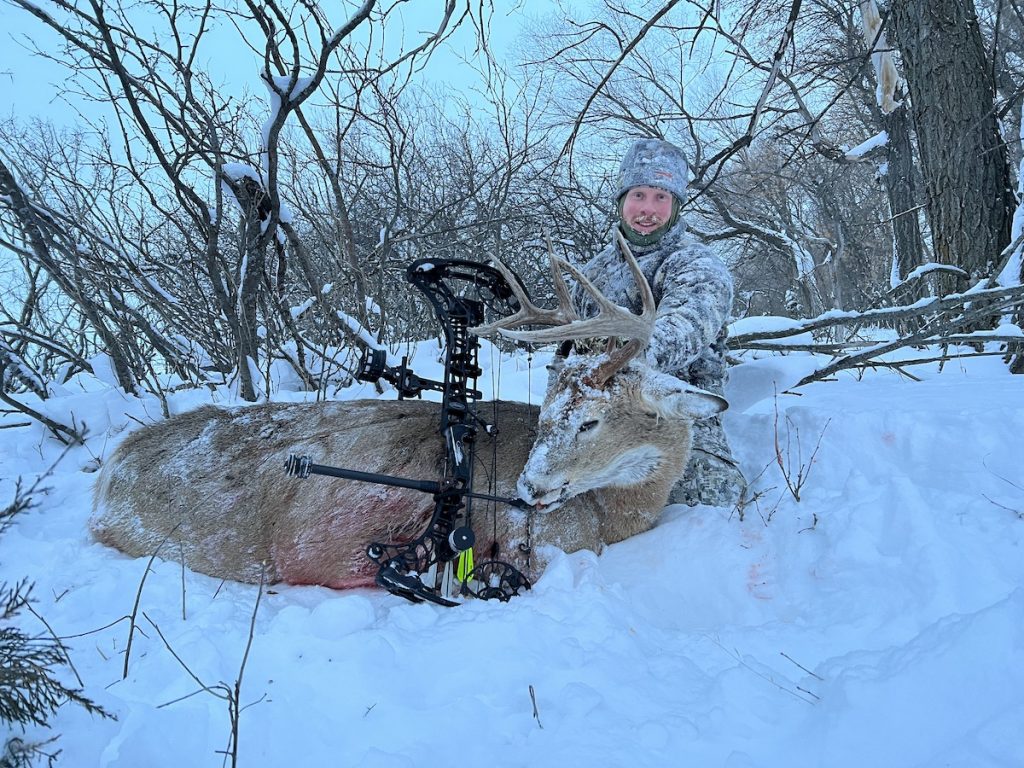
The Phase4’s attributes all look good on paper, but seeing them in the form of a frozen blood trail with a massive flatland buck lying at the end really proved that Mathews has done it again.


